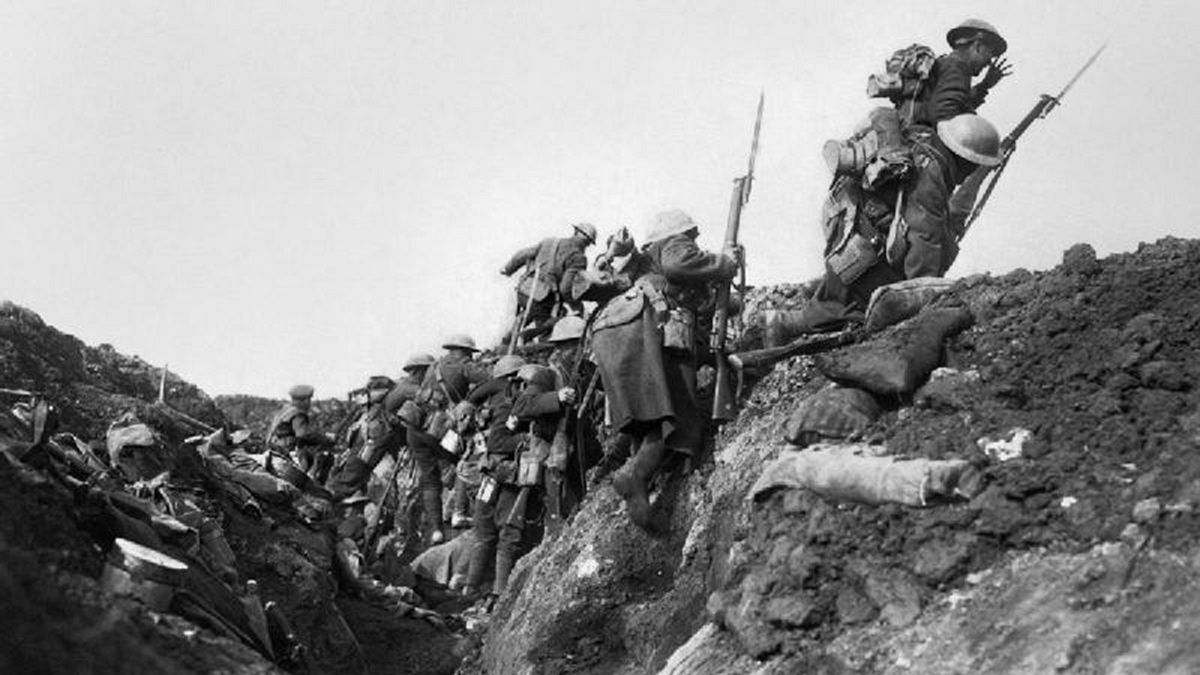1916: July 1
In order to raise enough men to make a decisive attack against on the Western Front, Britain replaced voluntary service with conscription at the beginning of 1916. The ‘decisive attack’ that was planned was the Battle of Somme, a British-run Allied offensive.
In the lead up to the attack the Allies carried out a major bombardment of the enemy frontline. They envisaged a complete destruction of the German defences which would allow troops to almost walk across No Man’s Land and seize the opponents’ trenches. In reality the bombardment had failed to clear the barbed wire and concrete bunkers of the Germans and the prelude of bombings and artillery fire had just served to warn the Germans of the impending attack. When the Allied forces sent their men out they were mown down in staggering numbers: on the first day alone the British suffered more than 57,000 casualties.
The British made some very small advances and while the French were faring better, the gains were not particularly significant. Even the first ever use of tanks in warfare by the British couldn’t break the stalemate and the battle dragged on for four months.
When the weather turned cold and snow brought a halt to the fighting the Somme offensive was called off. It had brought the Allies just 125 square miles, while more than 600,000 of their troops were killed, wounded or missing. German casualties were around 650,000. British Field Marshal Douglas Haig was heavily criticised for his handling of the battle, although some argue that it was all necessary to relieve the pressure at Verdun.
